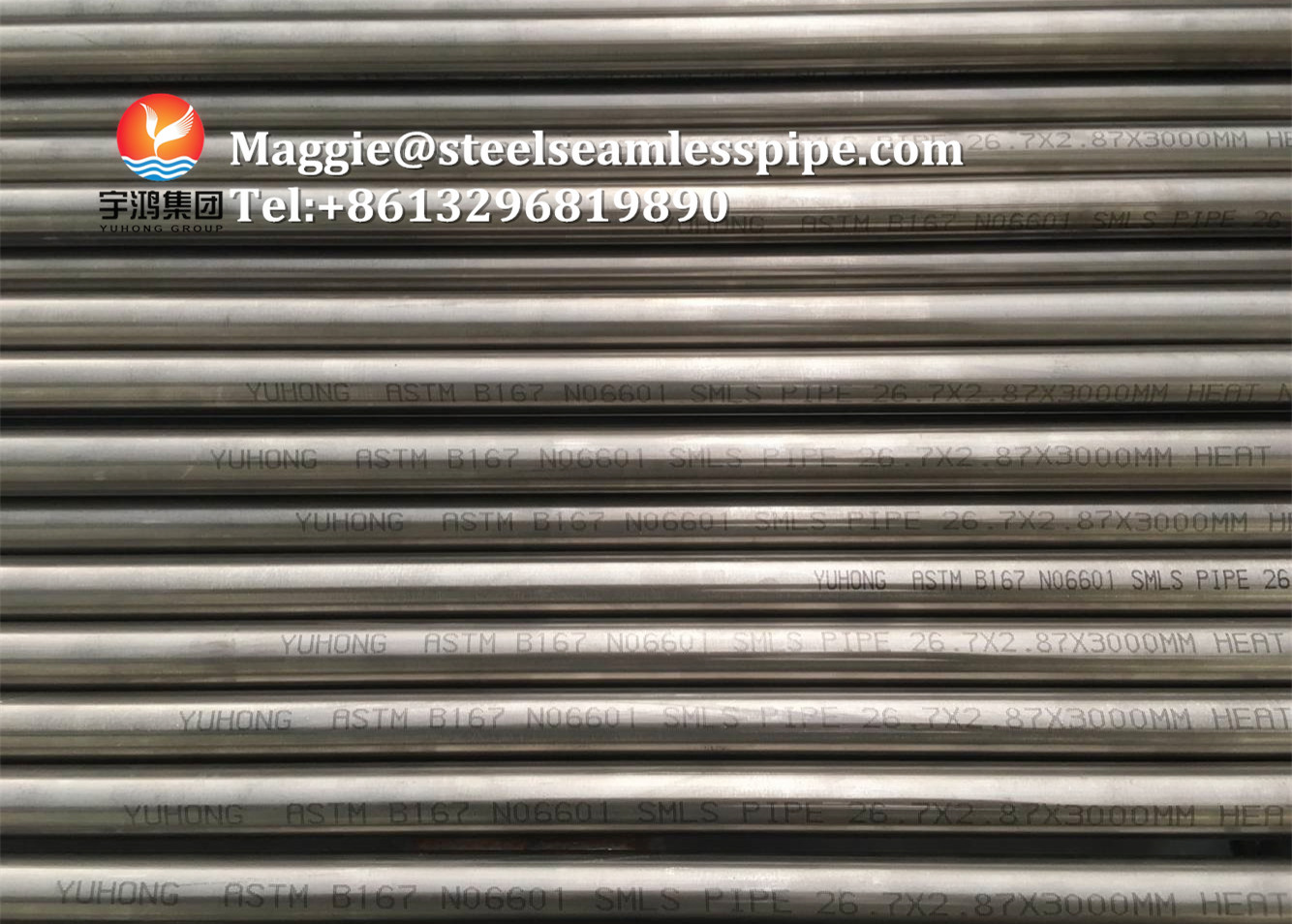 Heat Exchange Tube ( 53 )
Heat Exchange Tube ( 53 ) Boiler Tube ( 37 )
Boiler Tube ( 37 ) Nickel Alloy Steel Pipe ( 21 )
Nickel Alloy Steel Pipe ( 21 ) Nickel Alloy Steel Tube ( 16 )
Nickel Alloy Steel Tube ( 16 ) Duplex Steel Pipe ( 10 )
Duplex Steel Pipe ( 10 ) Duplex Steel Tube ( 4 )
Duplex Steel Tube ( 4 ) Stainless Steel Pipe ( 18 )
Stainless Steel Pipe ( 18 ) Stainless Steel Tube ( 14 )
Stainless Steel Tube ( 14 ) Steel Flange ( 30 )
Steel Flange ( 30 ) Steel Fitting ( 25 )
Steel Fitting ( 25 ) Special Steel Products ( 14 )
Special Steel Products ( 14 )Model No.: UNS NO6600, NO6601
Brand: YUHONG
Type: Round
Standard: ASME SB163/SB167
Steel Grade: 600 Series
Composition: Stainless Steel Scrap
Surface Treatment: Polished
Certificate: ABS, GL, DNV, NK, PED, AD2000, GOST9941-81, CCS, ISO 9001-2008
Application: Boilier,heat Exchanger
Material Grade: UNS NO6600, NO6601
Packaging: according to client requirements/wooden case packing
Productivity: according to client requiremen
Transportation: Ocean
Place of Origin: CHINA
Supply Ability: according to client requirements
Payment Type: T/T
Nickel Alloy Pipe Exchanger Tubes ASME SB163/ SB167 UNS NO6600 NO6601
Nickel Alloy Pipes: Benefits, Manufacturing & More...
600,601,625... Alloy Tube Nickel Alloy Pipes: Benefits, Manufacturing & More Nickel alloy pipes are a popular choice for many different projects. Let`s take a brief look at their benefits, manufacturing process, grades and applications.
Benefits
Using nickel alloy pipe brings three primary advantages:
Resistance to Heat
Some nickel pipe alloys can endure very high temperatures, making them advantageous in machinery or other environments where intense heat is present.
Resistance to corrosion
Oxidation reactions cause corrosion. Nickel alloys have a slower rate of oxidation than most metals, meaning they can resist corrosion for longer.
Low Rate Of Expansion
Many nickel alloys pipes have either a low rate of thermal expansion or a rate of thermal expansion that can be predicted very accurately. This makes them desirable in high-temperature environments where you need a uniform shape.
Manufacturing
Nickel alloy pipes are made with a complex manufacturing process that begins with the purest materials. Contaminated materials would lead to pipes without the beneficial properties mentioned above. The stages of the manufacturing process include:
Throughout the process, quality control is maintained through a wide range of statistical tests.
Grades
There are a number of different grades of nickel alloy pipes. Some of the most popular include:
Nickel 625 Tubing
This grade is comprised of 20 to 30 percent chromium, which is a greater amount than many other nickel alloys. It`s often found in engine exhaust systems.
Nickel 600 Pipe
Nickel 600 offers a handful of unique benefits: it can be joined with many different methods, it`s very workable, and it performs well in very high and low temperatures.
Nickel 601 Pipe
Often used in high temperature environments, Nickel alloy pipe 601 has a high creep rupture strength and good mechanical strength.
Nickel 400 Tubing
Comprised of around 23% copper, Nickel 400 tubing is often used in oil towers, crude petroleum stills, de-aerating heaters, marine projects, heat exchangers, freshwater tanks and gas tanks. Furthermore, it also performs very well in alkaline salt and salt water.
Applications:
The beneficial properties of nickel alloys make them useful in a wide variety of applications. These include:
| Element | Nickel + Cobalt | Carbon | Silicon | Iron | Copper | Manganese | Chromium |
| Avg. Nominal % | 72.0 Min | 0.15 Max | 0.50 Max | 6.0 - 10.0 | 1.0 Max | 1.0 Max | 14.0 - 17.0 |

Product Categories : Heat Exchange Tube > Nickel Alloy Heat Exchanger Tube
